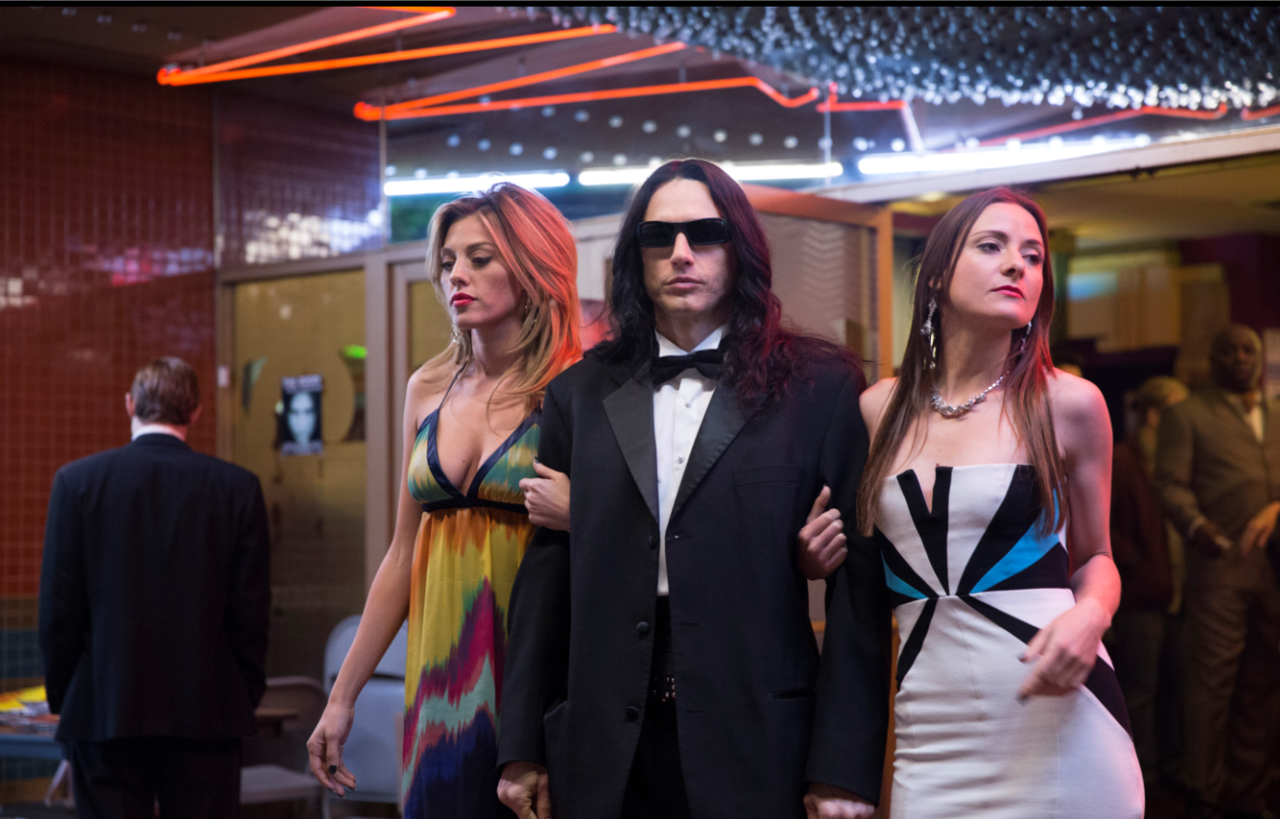Learning the true story behind something mysterious and otherworldly can be as disappointing as it is enlightening. Tommy Wiseau's 2003 cult hit The Room is those things and more--an uncanny, unintentionally surreal drama that makes such little sense that viewers often begin to doubt their own sanity after watching it. The Disaster Artist, James Franco's film about the making of The Room, explains how it came to be, which is both a good and bad thing.
The Disaster Artist shines a spotlight on the crazy journey of Tommy Wiseau and Greg Sestero, The Room's co-star and co-author of the book on which this is based, The Disaster Artist: My Life Inside The Room, The Greatest Bad Film Ever Made. In doing so, the movie may take away some of the magic for those who love to hate (or simply love!) The Room. But that's not The Disaster Artist's most serious flaw. That would be the way it smooths over certain real life details, all in the name of transforming The Disaster Artist into a tidier, more easily digested bromance story.
Yes, The Disaster Artist simplifies the story of the making of The Room, one of the most obtuse movies ever made, in order to make it more accessible. How's that for irony?
For example, there's the question of whether Sestero, played in The Disaster Artist by James Franco's brother Dave Franco, actually wanted to be in The Room. In his book, Sestero claims he knew the movie would be steamy garbage and resisted Wiseau stubbornly, until the filmmaker offered him heaps of money--and a new car--to star alongside him. That was the night before shooting, when the character Mark was already cast, and instead of firing the actor who Sestero was now replacing, Wiseau insisted on shooting every scene twice, once with each actor, until some of the cast caught onto the fact that the cameras weren't actually rolling for half the takes.
In the Francos' version of events, Sestero agrees to play Mark immediately and enthusiastically, naively convinced The Room will be great, even after reading the famously terrible original script. In the process, the movie erases multiple real people from the narrative--people who got seriously screwed over by Wiseau and his boneheaded antics. That's doubly problematic because this isn't ancient history--we're talking about events that unfolded around 15 years ago, not in the distant past.
And yet, if the goal was to make the story into a more easily digested narrative--however ironic that might be--it worked. Wiseau is both a huge a-hole and utterly convinced of his own saintliness, and The Disaster Artist embraces him as a character. James Franco's portrayal of the eccentric enigma of a person, from his shambling, hunched-over stature to his unplaceable accent and speech patterns, is both spot-on and often unflattering. Yet the movie makes something plausible--even relatable--out of the unlikely-seeming friendship between him and Greg. Unsurprisingly, the Franco brothers have great chemistry together.
The Disaster Artist is also unforgivingly hilarious. In addition to the Francos, the cast is filled with great comedic minds like Seth Rogen, Paul Scheer, Hannibal Buress and Jason Mantzoukas, and great actors like Alison Brie (GLOW, Community, Mad Men), Josh Hutcherson (Hunger Games), and, briefly, Bryan Cranston, who plays himself in a single scene. In portraying the making of The Room, these actors also, by necessity, remade big chunks of it, and they couldn't resist putting the two side-by-side at the end. The results will have you in stitches, even if you find The Room itself unwatchable.
The whole thing still centers on Wiseau and Sestero. It's understandable and, ultimately, forgivable that The Disaster Artist turns their weird, complicated friendship into something more straightforward, and it's fun to watch James Franco prance around as Wiseau--truly one of the strangest people alive--while the younger Franco plays straight man at his side.

The Disaster Artist also doesn't shy away from the darker aspects of this story. As Sestero recounted in his book, Wiseau refused to listen to anyone, including his script supervisor, director of photography, costume supervisor, makeup artist, fellow actors, and even Sestero himself, when it came to making The Room. The months-long shoot was marred by hellish working conditions, all of which Wiseau singlehandedly inflicted on those involved in order, it seems, to adhere to some twisted vision of what he thought making a "real Hollywood movie" should be like.
That Wiseau ultimately found a form of success with this doesn't excuse his methods, and although The Disaster Artist makes him somewhat relatable, Sestero remains the viewpoint character, an unimpeachable wall of non-understanding ever present between the audience and Wiseau--as it is in real life.
To this day, nobody knows (at least publicly) where Tommy Wiseau is from, how old he is, or where he got his riches. The Disaster Artist doesn't elaborate on any of those details, and if James Franco knows the answers, he's not telling. But the movie does help shine a light on how The Room got made--even as it glosses over some of the story's most unfortunate details--and why some people find it so irresistible. Whether you're one of those people or not, The Disaster Artist is a fascinating and entertaining watch.
| The Good | The Bad |
|---|---|
| The Francos are great as Tommy and Greg | Oversimplified version of events |
| Hilarious all the way through | Leaves out some real people who Wiseau screwed over |
| Excellent supporting cast | |
| Doesn't shy from most unflattering details |
